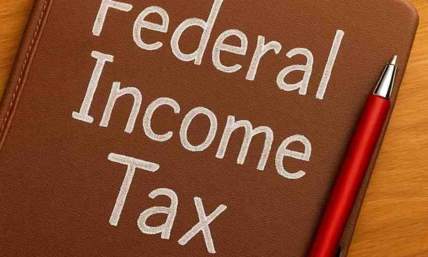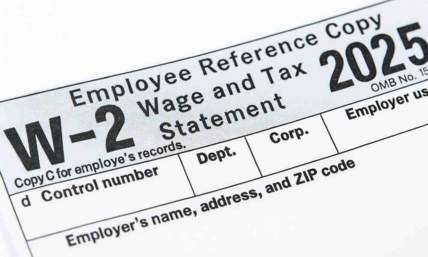Bringing Home The Bacon: How To Calculate Your Take Home Pay?
Quick quiz - Do you know how to calculate take home pay? While many people love their jobs, it might not surprise you to find out that most people don't think they make enough money. That could be because when they got their job, they didn't properly know how to calculate take home pay that they would be earning from every check.
If you don't calculate your net income correctly, you could be mistaking your gross for your net, and making financial errors left and right. Find out the four steps on how to calculate take home pay from every paycheck.
Also read: How to Provide Proof of Income
1. Consider Deductions and Exemptions
The first step to understanding how to calculate take home pay is to understand deductions and exemptions. If you get hired for a new job, you might be excited to see the figure that you're being offered. However, if you get stars in your eyes too quickly, you'll end up taking an offer that's less than you deserve. If you don't run the numbers in your head, you might end up accepting an offer that you should have tried to negotiate.
Figuring out how to calculate take home pay can be quite simple. Below a certain threshold, you can take off a standard percentage from your gross salary to get your net. After your federal and state taxes are deducted, you might not have as much as you would have expected. You can also request some deductions or exemptions depending on your status.
If you anticipate having to pay a lot to the government at the end of the year, you could have a small portion of your paycheck deducted every month and sent in. Your first day at a new job, you'll probably be asked to fill out a W-4 form. This is the form where you can request that your employer help you to withhold a certain amount of money from every paycheck.
If you're single, you could have one or zero personal exemptions. If you're contributing to your retirement accounts on a regular basis or paying health or life insurance, these get deducted from payroll. When you're trying to figure out how to calculate take home pay and how much is actually yours from every paycheck, don't forget about these costs.
Also read: Calculate Take Home Pay
2. How Much Income Is Taxable
While learning about how to calculate take home pay it is crucial to understand taxable income. Though you might not realize it, some of your income might not be taxed. If you earn below $120,000 a year, you'll pay around $7.65 of every paycheck to Medicare and Social Security. Be sure to subtract this when doing your calculations.
Then you'll be adjusting your number based on your personal exemptions or standard deductions. These are given to you by the IRS before calculating income tax. Every year, personal exemption rates change. Each exemption that you claim on your W-4 form will cost you around $4,000. This rate is subject to change so make sure to check the IRS website to understand how it's changed every year.
If you have children, you'll be subtracting this amount again and again from your gross income that will be taxed. From this perspective, if you made around $4,000 and had one exemption, you would have no taxable income. Next, the IRS will calculate by subtracting your standard deduction. This is another figure that will change every year.
Check out the latest rates from Forbes. After subtracting all of these figures, you'll know how much of your income will be considered "taxable". This is the figure that the state and federal tax authorities will use to calculate how much to deduct from your paycheck.
Also read: What is the average credit score?
3. Figure Out Income Tax
Got an idea on how to calculate take home pay? Let's talk more about income tax. Your income is going to be subject to several different taxes. You'll be hit by federal and state income taxes, which can be high based on the state that you live in. There might even be a third tax that's more locally oriented, especially if you live in a major city.
Your tax bracket, which is where your income falls in relation to standards set by the government, determines how much you're going to pay. Also affecting how much you pay is your filing status, which is related to whether or not you're married.
If you're in one of the states that require a personal income tax, you'll find the figure is based on your local tax bracket. There are different median incomes for every state in the country.
The state government website where you live will tell you how much you should be paying. Search for rates of local taxes as well. If you live in New York City, for example, expect to pay an additional percentage on top of federal and state taxes.
Combine these figures together to get an idea of how much gets deducted from your paycheck. If you don't have any other "after-tax" deductions, this will be how much you'll take home for every regular check this year. Expect rates to change next year.
Also read: How To Find Your Net Worth
4. Other Deductions
Those aforementioned after-tax deductions from your payroll will also impact how to calculate take home pay. While some accounts, like a health savings account, will have their money deducted before taxes, payroll deducts some funds after.
If you contribute a certain percentage of your income from every check to a retirement fund, you'll be deducting that figure before taxes. However, if you're sending money to a savings account, that money will be sent after taxes.
If you pay health insurance from your check, that will be another after-tax deduction. Any union dues that come out of your check will also be in that category.
Think Realistically On How To Calculate Take Home Pay
When you're trying to calculate how you're going to pay for this or that expenditure, make sure you're adequately measuring your take home pay. If you don't, you could make some critical errors in budgeting or calculating whether or not you could afford your next big purchase. Avoid the headache of how to calculate your take home pay and other calculations.
There is a way! Simply put in your information on our pay stub generator tool and create your paystubs easily headache-free!















